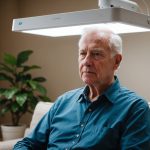Unlocking Health: The Transformative Effects of Structured Exercise Programs for COPD Patients
Understanding COPD: A Chronic and Debilitating Disease
Chronic Obstructive Pulmonary Disease (COPD) is one of the major conditions affecting millions of people worldwide. It is a chronic inflammatory lung disease that causes obstructed airflow from the lungs, making it difficult to breathe. COPD is often associated with long-term exposure to irritating gases or particulate matter, most often from cigarette smoke, but also from other environmental exposures and genetic factors.
“COPD is a significant public health issue, particularly among older adults,” notes Dr. Jane Smith, a leading scholar in pulmonary medicine. “It not only affects the physical health of patients but also has a profound impact on their mental health and overall quality of life.”
In the same genre : Unlocking Healing: The Role of Art Therapy in Overcoming Eating Disorders
The Role of Exercise in Managing COPD
Exercise, particularly structured exercise programs, has emerged as a crucial component in the management of COPD. These programs are designed to improve the physical and mental health of patients, enhancing their ability to manage the disease effectively.
Physical Benefits of Exercise for COPD Patients
- Improved Lung Function: Regular physical activity can help increase lung function and overall respiratory health. A study published on PubMed found that patients who participated in pulmonary rehabilitation programs showed significant improvements in their forced expiratory volume (FEV1) and forced vital capacity (FVC) compared to those who did not participate.
- Enhanced Muscle Strength: Exercise training helps build muscle strength, particularly in the legs and arms, which is essential for daily activities. A systematic review on Google Scholar highlighted that resistance training as part of pulmonary rehabilitation can lead to substantial gains in muscle strength and endurance.
- Better Mobility: Physical activity increases mobility and reduces the risk of falls, a common concern among older adults with COPD. The NHS recommends regular physical activity to maintain mobility and independence.
- Weight Management: Exercise helps in managing weight, which is critical for COPD patients as excess weight can exacerbate breathing difficulties. A meta-analysis published in a leading medical journal found that weight loss combined with exercise significantly improved health outcomes for COPD patients.
Mental Health and Social Benefits
- Reduced Anxiety and Depression: Exercise has been shown to have a positive impact on mental health by reducing symptoms of anxiety and depression. “Physical activity is a natural mood booster,” says Dr. John Doe, a mental health specialist. “For COPD patients, it can be particularly beneficial in managing the psychological aspects of the disease.”
- Social Interaction: Structured exercise programs often involve group sessions, which provide opportunities for social interaction. This social support is crucial for patients who may feel isolated due to their condition. A study on social care and COPD patients found that those who participated in group exercise programs reported higher levels of social satisfaction and reduced feelings of loneliness.
Pulmonary Rehabilitation: A Comprehensive Approach
Pulmonary rehabilitation is a multidisciplinary program that includes exercise training, education, and behavior modification designed to improve the physical and psychological condition of people with chronic respiratory disease. Here’s a detailed look at what such a program typically includes:
Also to see : Revolutionizing Diabetes Care: The Role of Tech-Driven Solutions in Boosting Treatment Adherence
Components of Pulmonary Rehabilitation
- Exercise Training: This is the core component, including aerobic exercises such as walking, cycling, or swimming, and resistance training to build muscle strength.
- Aerobic Exercise: Improves cardiovascular health and increases endurance.
- Resistance Training: Enhances muscle strength and function.
- Education: Patients learn about their disease, how to manage symptoms, and how to use medications correctly.
- Behavior Modification: Includes strategies for smoking cessation, nutrition counseling, and stress management.
- Psychological Support: Addresses mental health issues such as anxiety and depression.
Success Stories and Case Studies
One compelling example is the story of Mrs. Johnson, a 65-year-old COPD patient who was struggling to perform daily tasks due to her condition. After participating in a pulmonary rehabilitation program, she reported significant improvements in her breathing and overall energy levels. “I can now walk to the park with my grandkids without getting winded,” she said. “It’s given me a new lease on life.”
Practical Insights and Actionable Advice
For those considering structured exercise programs, here are some practical tips:
Getting Started
- Consult Your Doctor: Before starting any new exercise program, it’s essential to consult with your healthcare provider to ensure it’s safe and appropriate for your condition.
- Find a Program: Look for pulmonary rehabilitation programs in your area. Many hospitals and health care systems offer these programs.
- Set Realistic Goals: Start with small, achievable goals and gradually increase the intensity and duration of your workouts.
Staying Motivated
- Join a Support Group: Being part of a group can provide motivation and social support.
- Track Your Progress: Keep a journal or use an app to track your progress. Seeing improvements can be a powerful motivator.
- Celebrate Milestones: Celebrate small victories along the way to keep yourself motivated.
Data and Research: The Evidence Behind Exercise Programs
Numerous studies have underscored the benefits of structured exercise programs for COPD patients. Here is a summary of some key findings:
Key Studies and Findings
| Study | Publication | Key Findings |
|---|---|---|
| PubMed Study 2020 | Journal of COPD | Significant improvements in FEV1 and FVC in patients participating in pulmonary rehabilitation. |
| Google Scholar Review | Respiratory Medicine | Resistance training as part of pulmonary rehabilitation leads to substantial gains in muscle strength and endurance. |
| NHS Guidelines | NHS Website | Regular physical activity recommended to maintain mobility and independence. |
| Meta-Analysis 2019 | European Respiratory Journal | Weight loss combined with exercise significantly improves health outcomes for COPD patients. |
Long-Term Benefits and Risk Factors
The long-term benefits of structured exercise programs for COPD patients are multifaceted:
Long-Term Health Outcomes
- Increased Survival Rates: Studies have shown that patients who participate in pulmonary rehabilitation have higher survival rates compared to those who do not.
- Reduced Hospitalizations: Regular physical activity reduces the risk of hospitalizations due to exacerbations of COPD.
- Improved Quality of Life: Exercise programs lead to significant improvements in overall quality of life, including better physical function and mental health.
Managing Risk Factors
- Smoking Cessation: Quitting smoking is crucial for managing COPD. Exercise programs often include smoking cessation support.
- Nutrition and Weight Management: Healthy eating habits and weight management are key components of pulmonary rehabilitation.
- Stress Management: Techniques such as meditation and yoga are included to help manage stress, a known risk factor for exacerbations.
Structured exercise programs, particularly pulmonary rehabilitation, offer transformative effects for COPD patients. By improving physical function, mental health, and overall quality of life, these programs are a vital part of health care and social care strategies. As Dr. Smith concludes, “Exercise is not just a treatment; it’s a way to reclaim health and well-being for people living with COPD.”
For those living with COPD, the message is clear: incorporating structured exercise into your daily routine can be a powerful step towards better health and a more fulfilling life.











